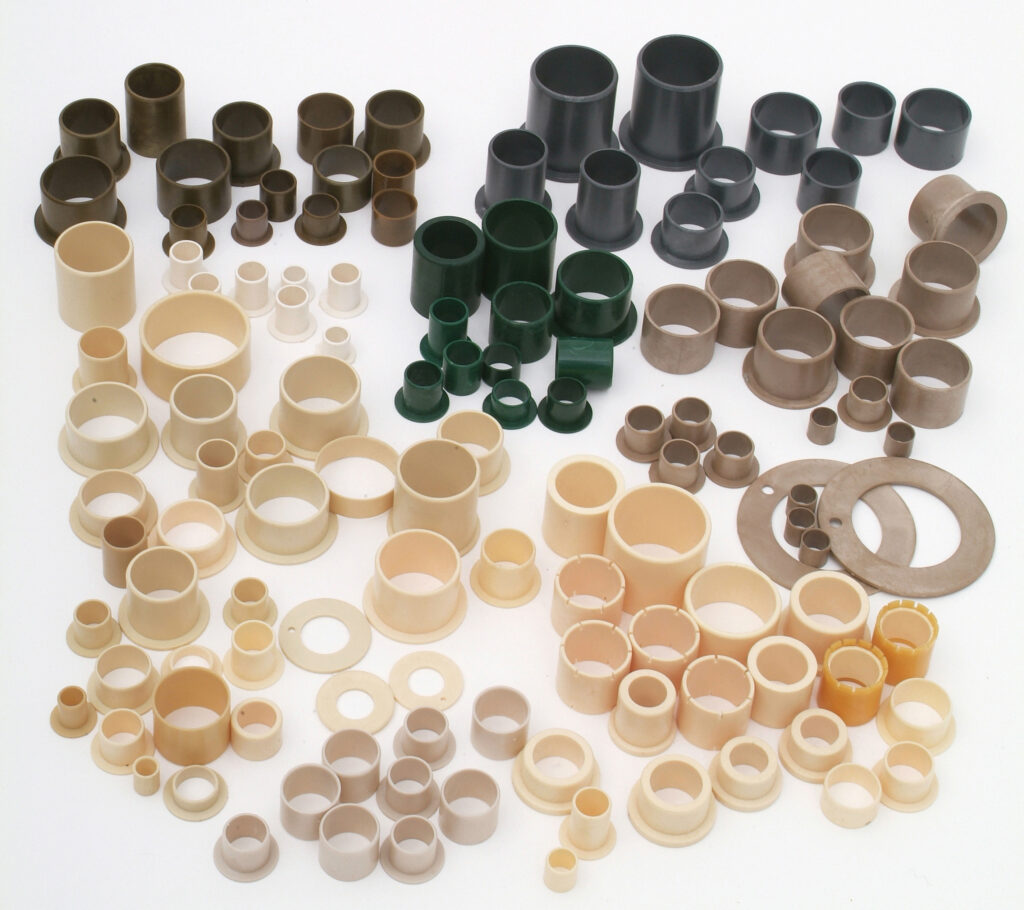Plain bearings – advantages and disadvantages at a glance
Lars Butenschön | 18. March 2022
You are faced with the decision to use a plain bearing, but you are not sure whether this is really the better choice compared to rolling bearings? Why not leave everything alone and simply do without a bearing? This post is intended to help you make that decision, in addition to providing a preview of what questions follow that decision.

The technology at a glance
Unlike rolling bearings, needle bearings or ball bearings, plain bearings do not consist of various individual moving parts. Plain bearings are one-piece components and consist at most of several materials firmly bonded together in layers or other structures, which are intended to give the bearings different specifications. All plain bearings have the same operating principle in common. The relative movement between them and the adjacent machine parts to be supported is a sliding movement.
Sliding friction behaves fundamentally differently from rolling friction and places different demands on surfaces and material properties. This different behaviour affects the application as a whole. Drive torques to be applied are sometimes higher than for rolling bearings. Tilting moments can also be a problem if drives are placed at an offset. Another challenge is heat dissipation. Plain bearings generate more frictional heat at high speeds and loads. These must either be avoided (e.g. hydrodynamic plain bearings) or dissipated by lubrication or special dissipative materials. The exact limit values depend on the respective plain bearing and are specified by the manufacturer.
The layer structure or the one-piece design also offer great advantages for this. The design thus saves installation space, weight and costs compared with the more complex rolling bearings, needle bearings or ball bearings. In addition, the bearings are usually less sensitive to contaminants such as dust and dirt. Unlike the vast majority of rolling bearings, needle bearings and ball bearings, plain bearings also do not need to be permanently lubricated, depending on the type.
In summary, the following advantages and disadvantages can be listed:
Advantages of plain bearings
- Very low space or installation space required
- Simple structure
- Cost-effective due to less complex production
- Lightweight, due to simpler structure
- Easy assembly and disassembly
- Vibration-dampening (depending on material)
- Suitable to take high loads even for a long term
- Quiet operation due to lack of moving parts
Disadvantages of plain bearings
- High load-speed combinations generate too much heat
- Tilting moments with offset drives difficult
- Higher drive torques required in some cases
- Bearing clearance mandatory
- Additional cooling / heat dissipation required depending on design and application
Undecided? We would be happy to assist you!
Our experienced application consultants will assist you in designing your bearing position and work with you to determine the most appropriate solution. Free of charge, without obligation and simple, by phone, live chat, virtual consultation or on site. igus® has been manufacturing and supplying plain bearings since 1964 and supplies over 250,000 customers worldwide in a wide range of industries. Learn more
